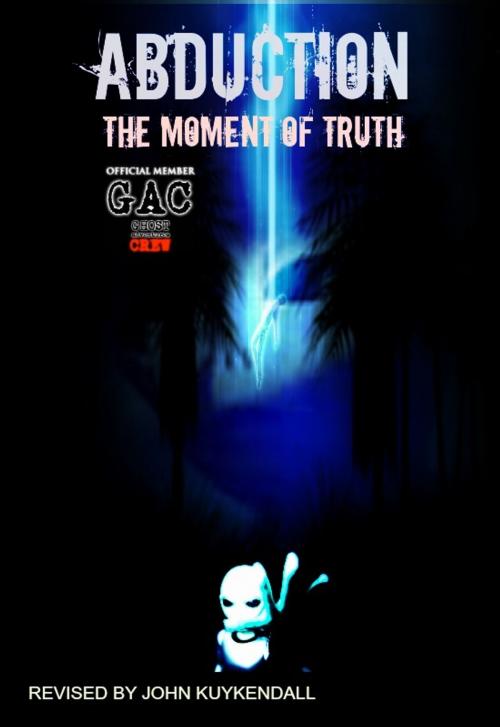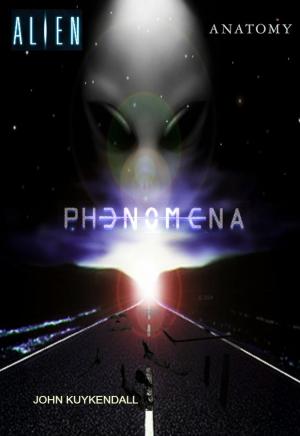| Author: | John Kuykendall | ISBN: | 1230000155593 |
| Publisher: | John Kuykendall | Publication: | July 28, 2013 |
| Imprint: | 474 | Language: | English |
| Author: | John Kuykendall |
| ISBN: | 1230000155593 |
| Publisher: | John Kuykendall |
| Publication: | July 28, 2013 |
| Imprint: | 474 |
| Language: | English |
The reports of the abductees themselves and the recording, sifting, and evaluating of these reports by the investigator. That is, of necessity, a participatory process in which the person exploring the experiences-in this case myself-must enter fully and empathically.
Upon reviewing the text of the book with the help of colleagues, it is apparent that my growing conviction about the authenticity of these reports, together with a sense of their great potential significance, resulted in a tendency to write as if the fact or reality of the experiences was established before the case had been made. In so doing, I may have denied some readers, especially those who would be naturally skeptical, the opportunity to make up their own minds. In this revised edition, I have altered the language in specific places to make clear that I am reporting the experiences of the abductees as told to me and not presuming that everything they say is literally true. Whether or not each of their communications is recorded with qualifying words like "reported that" or "according to," the objective distance between me and the experiences implicit in such phrases should be understood throughout the text. Basic clinical scientific questions that have been raised, such as the status of physical evidence, the role of subject expectation or investigator influence, the reliability of memory, the accuracy of hypnosis, and the possibility of alternative explanations have been addressed in Appendix A. Finally, in order to improve the book's readability, the historical and crosscultural sections have been moved to the back (Appendix B), and the opening sections that contain my introduction and first reactions to learning about the abduction phenomenon have been streamlined.
The most archetypal expression of the cry of anti-science came from science writer James Gleick in a review in the New Republic magazine (Gleick 1994 ) Gleick called the "alien-abduction mythology" a "leading case of the anti-rational, anti-science cults that are flourishing with dismaying vigor in the United States." He lumps the alien abduction phenomenon together with "paranormals who bend spoons, parapsychologists who sense spiritual auras, crystal healers, believers in reincarnation" and "psychic crime-solvers" as well as "tarot readers and crystal ball gazers." In a similar vein psychoanalyst Sanford Gifford, in a review of my book for a psychoanalytic journal (Gifford, in press), called it a "subversive assault on psychoanalysis as a science" (he assumes that the phenomenon must be some sort of product of the unconscious mind), and wrote of the abduction experiencers as individuals "holding irrational beliefs that are not shared by the 'compact majority.' " In that sense, he continued, "they are 'crazy' in the same way as believers in Creationism, faith healing, thought transference, or the end of the world on a specific date." Music critic (!) Milo Miles, reviewing Abduction in The Boston Globe worried that "the secular world and the spirit world must be kept as separate as church and state." He concludes that "Mack should beware that if rationality and objective truth are thrown out the door, no one can predict what will rush in through the opening (Miles 1994)." I believe these critiques reflect a misunderstanding of the nature of rationality and reason, and even of science itself. For what the
worldview implicit in these statements requires is the a priori exclusion of vast amounts of data simply because that information is in conflict with that point of view. This, I believe, is a far more irrational, and even dangerous, approach to knowledge than to allow information from every possible legitimate source to come into our minds before applying rationality and reason in assessing this information once we have "let it in.
The reports of the abductees themselves and the recording, sifting, and evaluating of these reports by the investigator. That is, of necessity, a participatory process in which the person exploring the experiences-in this case myself-must enter fully and empathically.
Upon reviewing the text of the book with the help of colleagues, it is apparent that my growing conviction about the authenticity of these reports, together with a sense of their great potential significance, resulted in a tendency to write as if the fact or reality of the experiences was established before the case had been made. In so doing, I may have denied some readers, especially those who would be naturally skeptical, the opportunity to make up their own minds. In this revised edition, I have altered the language in specific places to make clear that I am reporting the experiences of the abductees as told to me and not presuming that everything they say is literally true. Whether or not each of their communications is recorded with qualifying words like "reported that" or "according to," the objective distance between me and the experiences implicit in such phrases should be understood throughout the text. Basic clinical scientific questions that have been raised, such as the status of physical evidence, the role of subject expectation or investigator influence, the reliability of memory, the accuracy of hypnosis, and the possibility of alternative explanations have been addressed in Appendix A. Finally, in order to improve the book's readability, the historical and crosscultural sections have been moved to the back (Appendix B), and the opening sections that contain my introduction and first reactions to learning about the abduction phenomenon have been streamlined.
The most archetypal expression of the cry of anti-science came from science writer James Gleick in a review in the New Republic magazine (Gleick 1994 ) Gleick called the "alien-abduction mythology" a "leading case of the anti-rational, anti-science cults that are flourishing with dismaying vigor in the United States." He lumps the alien abduction phenomenon together with "paranormals who bend spoons, parapsychologists who sense spiritual auras, crystal healers, believers in reincarnation" and "psychic crime-solvers" as well as "tarot readers and crystal ball gazers." In a similar vein psychoanalyst Sanford Gifford, in a review of my book for a psychoanalytic journal (Gifford, in press), called it a "subversive assault on psychoanalysis as a science" (he assumes that the phenomenon must be some sort of product of the unconscious mind), and wrote of the abduction experiencers as individuals "holding irrational beliefs that are not shared by the 'compact majority.' " In that sense, he continued, "they are 'crazy' in the same way as believers in Creationism, faith healing, thought transference, or the end of the world on a specific date." Music critic (!) Milo Miles, reviewing Abduction in The Boston Globe worried that "the secular world and the spirit world must be kept as separate as church and state." He concludes that "Mack should beware that if rationality and objective truth are thrown out the door, no one can predict what will rush in through the opening (Miles 1994)." I believe these critiques reflect a misunderstanding of the nature of rationality and reason, and even of science itself. For what the
worldview implicit in these statements requires is the a priori exclusion of vast amounts of data simply because that information is in conflict with that point of view. This, I believe, is a far more irrational, and even dangerous, approach to knowledge than to allow information from every possible legitimate source to come into our minds before applying rationality and reason in assessing this information once we have "let it in.















